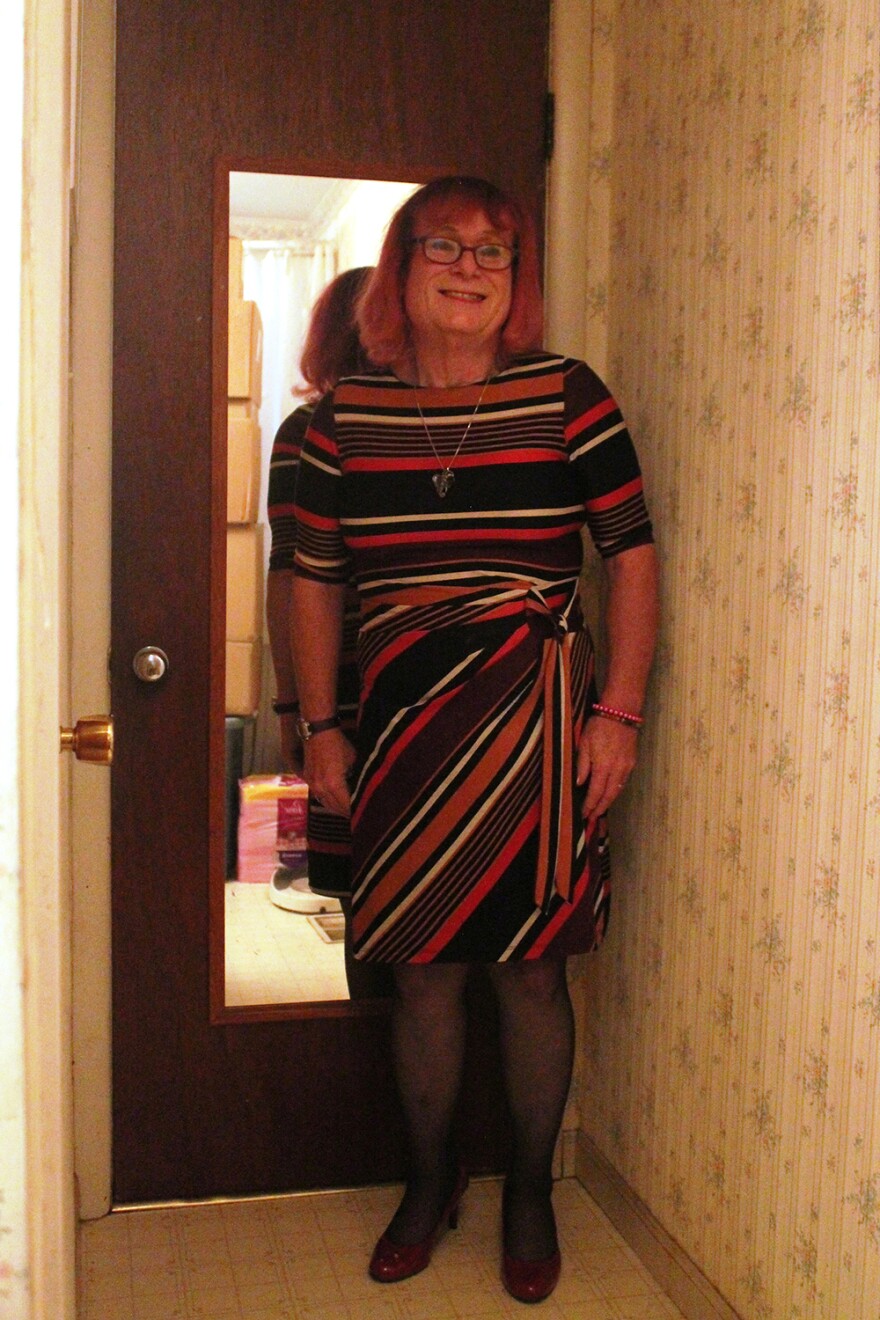Eighty-year-old Wisper Lowe, a transgender woman from Belleville, grew up during World War II, a period that demanded patriotism and strict gender roles.
Lowe was assigned male gender at birth. When she was 5, her mother caught her putting on lipstick.
“And her response was to smear the lipstick all over my mouth and then push me onto the front porch where all the neighborhood kids were playing in the street — and lock the door,” Lowe said.
As a child, and later as an adult, Lowe’s life has been typical of transgender women her age. Most of her time, she dresses and presents as a man. Even as transgender people and allies celebrate the annual Transgender Day of Visibility, Saturday, March 31, Lowe maintains a dual existence.
“I've spent all my life trying to be the man that people want me to be,” Lowe said. “But when I'm dressed as a woman, it just feels more normal, more natural. And that feeling's always been there.”
‘Saddest time of all’
Slightly more than one-half percent of Americans identify as transgender, according to the Williams Institute, a U.C.L.A. think tank focused on LGBTQ research.
In recent years, transgender people have become more visible and can now serve in the U.S. military,although President Trump recently recommended requiring troops to serve as the gender they were assigned at birth. But in most states, including Missouri — where 25,000 transgender people live — the rights of transgender individuals to work and live where they want, are not protected.

When Lowe was growing up, there wasn’t even a word to describe her experience. After her mother locked her out to be taunted by neighbors, she was more careful, occasionally trying on women’s clothes, alone, in the attic, an urge that only grew stronger as she grew up. A successful military career followed, then marriage. But marriage didn’t make the feelings go away.
“Three weeks after the wedding, she discovered me in one of her dresses,” Lowe said.
Lowe’s wife refused to talk about it. But when Lowe was in her 40s, she got a sliver of acceptance, when she went to see Masters and Johnson, the national sex experts based in St. Louis.
“They basically told me there was nothing wrong with me,” Lowe said. “But then I’d get with my wife and she’d tell me how terrible and disgusting it was.”
In recent years, Lowe’s been slipping out of the house with a change of clothes, to gather once a month with other transgender women.
“The saddest time of all is having to take the nails off, and the makeup off and change back into male clothing — go back to living as a man.”
‘A smile and a thumbs-up’
Shelley Richmond of Cahokia was born in the 1950s, an era that still expected rigid male and female roles. Like Lowe, Richmond always felt the male label didn’t fit. But mom’s girdle felt just right. At 4 years old, Richmond would shut the bathroom door, dig the girdle out of the hamper and gaze into the full-length mirror.

“In my mind, at that point in time, it was probably the most beautiful thing I could wear,” Richmond said. “I could look in that mirror and see myself, what little bit of transformation there was.”
For most of her life, Richmond lived as a boy, then a man, serving in the military, working at General Motors, getting married. After Richmond told her wife about the urges, she helped with the makeup and clothes, but only in private.
“It was kind of like the movie, ‘The Danish Girl,’” Richmond said. ‘The spouse was kind of looking at it like a game.”
But for Richmond, it was serious, a matter of identity. She made friends online with other transgender women. Two years ago, at age 61, she began presenting as a woman at work. Bosses and co-workers have been very accepting, she said.
Richmond and her wife of 43 years live in Richmond’s childhood home. Occasionally, she looks into that very same mirror she once faced as a young child, wearing her mother’s girdle.
“A lot of times, I [still] see that little girl standing there, staring back at me. Kind of a smile and a thumbs-up sort of thing,” Richmond said. “You know, [like] ‘You’re going, you’re there; you’re where you want to be.
Follow Nancy Fowler on Twitter: @NancyFowlerSTL





